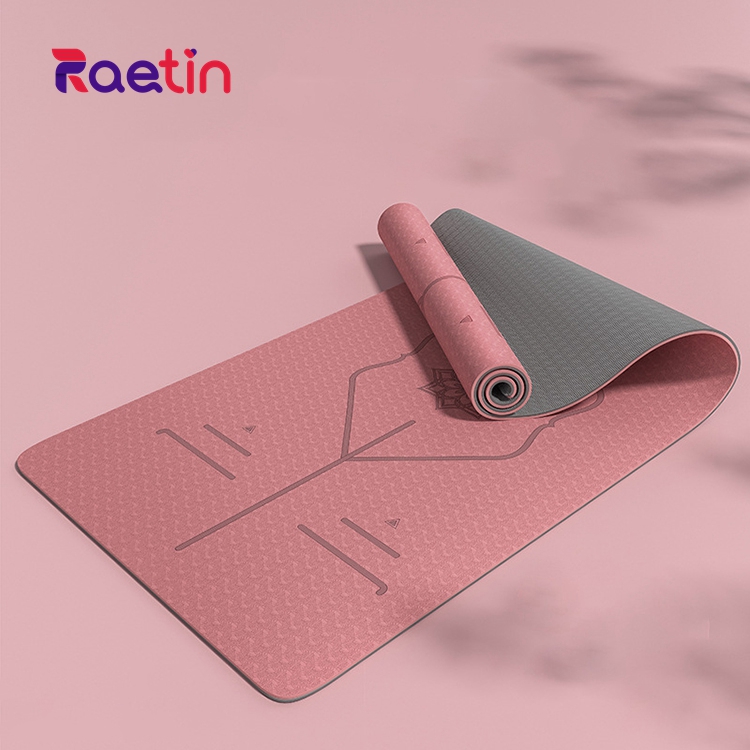Choosing the Perfect Yoga Mat: A Comprehensive Guide

Table of Contents
A yoga mat is an essential tool for practicing yoga, whether you’re attending a studio class or enjoying a session of yoga at home. With so many options available, it’s important to understand the factors that influence your choice, including thickness, material, and differences between yoga mats and exercise mats. This article will answer common questions about yoga mats and help you decide between options like a 4mm or 6mm mat.
What is the Best Thickness for a Yoga Mat?
The thickness of a yoga mat significantly affects your comfort and stability during practice. The ideal thickness depends on individual needs, preferences, and the type of yoga you practice.
- Thin Mats (1-3mm): Best for travel and portability, thin mats provide a strong connection to the ground, which is ideal for balancing poses. However, they may lack cushioning for joints.
- Standard Mats (4-5mm): A 4mm mat is the most popular choice for most practitioners. It strikes a balance between cushioning and stability, making it suitable for various yoga styles.
- Thick Mats (6mm or more): These mats offer extra cushioning, making them ideal for restorative yoga, people with sensitive joints, or those practicing on hard surfaces.
Which is Better: A 4mm or 6mm Yoga Mat?
Both 4mm and 6mm mats have their pros and cons:
- 4mm Yoga Mats: Provide better stability for standing and balancing poses, making them ideal for dynamic yoga styles like Vinyasa or Ashtanga. They are also lighter and easier to carry.
- 6mm Yoga Mats: Offer more cushioning, which is beneficial for seated or floor-based poses, as well as for beginners who need additional comfort. However, they may feel less stable for balancing poses.
Ultimately, the choice depends on your personal preferences, the type of yoga you practice, and whether you prioritize stability or cushioning.

What Type of Mat is Best for Yoga?
The best yoga mat depends on several factors, including material, texture, and grip. Here are some popular options:
Material
- PVC (Polyvinyl Chloride): Durable and affordable with excellent grip. However, it’s less eco-friendly.
- TPE (Thermoplastic Elastomer): Lightweight and eco-friendlier than PVC, TPE mats provide good cushioning and grip.
- Natural Rubber: Offers superior grip and cushioning, ideal for sweaty practices like hot yoga. It’s biodegradable and eco-friendly but can be heavier and pricier.
- Cork and Jute: Sustainable and natural, these mats are great for eco-conscious yogis. Cork mats are particularly popular for their anti-slip properties.
Texture and Grip
- Mats with a textured surface provide better grip, especially if you sweat during practice.
- Smooth mats are comfortable but may be slippery without adequate sweat absorption.
Portability
If you practice yoga at home, weight and portability might not be as important. However, if you plan to take your mat to a studio, a lightweight option is more convenient.
What is the Difference Between a Yoga Mat and an Exercise Mat?
While yoga mats and exercise mats might look similar, they are designed for different purposes:
Yoga Mats:
- Thinner (typically 3-6mm) to provide stability during balancing poses.
- Made with non-slip surfaces to prevent sliding during practice.
- Designed for bare feet, ensuring grip and connection to the ground.
Exercise Mats:
- Thicker (often 8mm or more) for additional cushioning, ideal for high-impact activities.
- Typically smoother, which may not provide enough grip for yoga poses.
- Designed for activities like Pilates, core workouts, or general fitness exercises.
If you’re practicing yoga at home, a dedicated yoga mat is highly recommended for its stability and grip.
Yoga at Home: How to Choose the Right Mat
For those practicing yoga at home, the right mat can make a huge difference in your experience. Consider the following:
- Space: If you have limited space, opt for a standard-sized mat (around 68-72 inches long and 24 inches wide). Taller practitioners may want an extra-long mat.
- Durability: If you practice frequently, invest in a high-quality mat made of durable materials like natural rubber or TPE.
- Style of Yoga: For restorative or gentle yoga, a thicker mat (6mm or more) provides more comfort. For dynamic styles, a 4mm mat offers better stability.

Conclusion
Choosing the right yoga mat is essential for enhancing your practice, whether you’re in a studio or doing yoga at home. A 4mm mat is ideal for most practitioners, offering a balance of cushioning and stability, while a 6mm mat is better suited for those who need extra joint support. Understanding the differences between yoga mats and exercise mats will ensure you select the right tool for your needs. By investing in a high-quality mat tailored to your practice, you’ll create a comfortable, supportive foundation for your yoga journey.
Hey there partner !
How can we help you today?
Raetin’s Blog
Welcome to the Raetin
Your go-to destination for custom tips, newest design trends, and inspiration.



